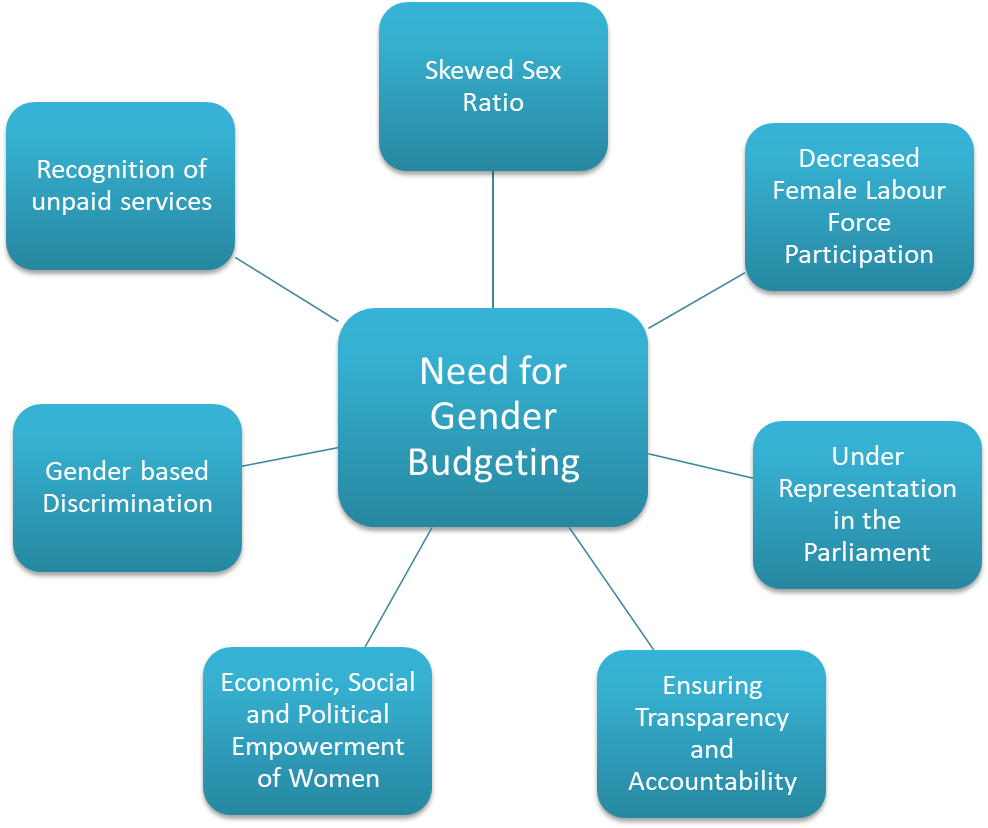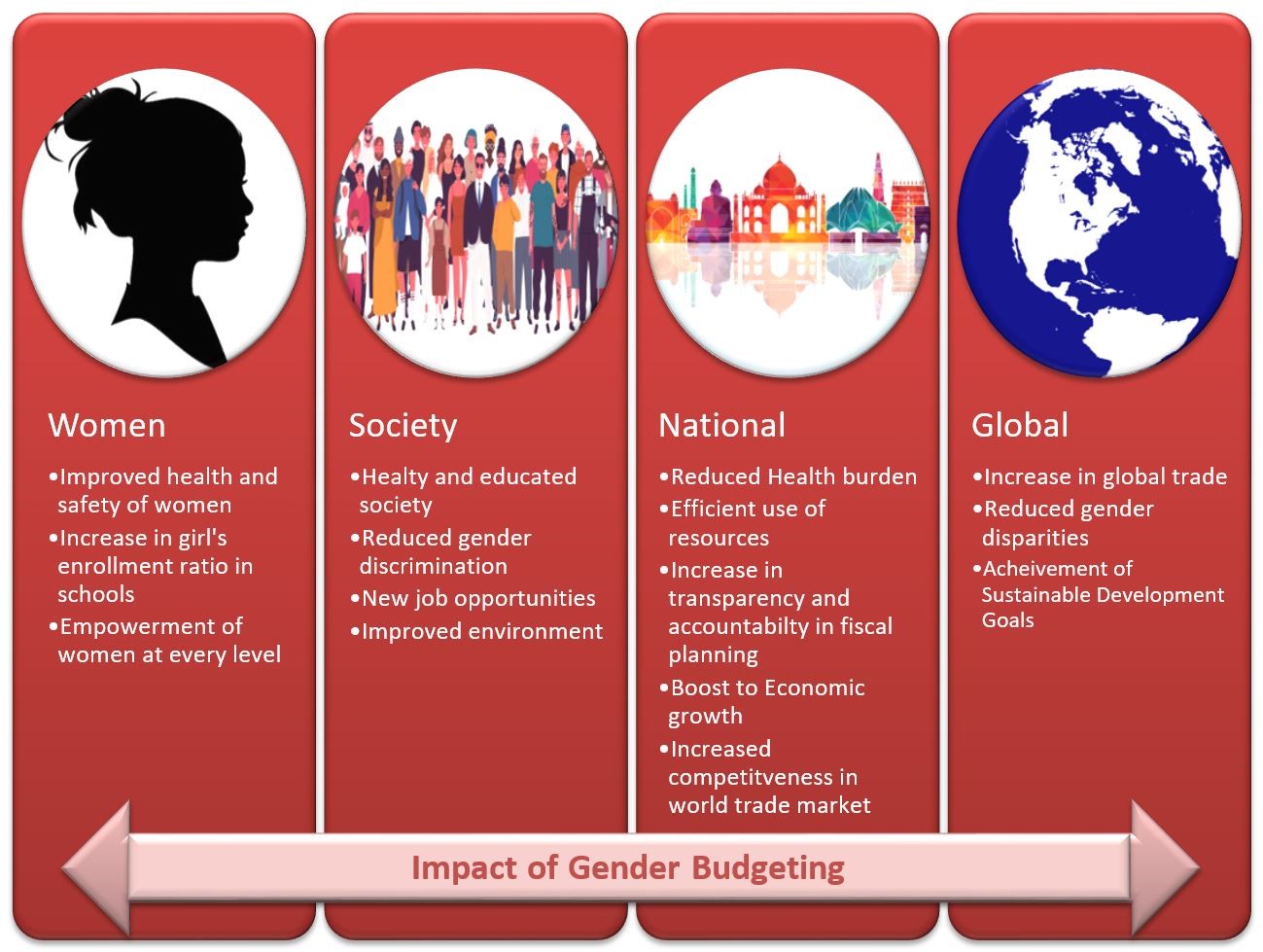My title is: Social Justice | Welfare Schemes for the vulnerable sections | Gender Budgeting
Gender Budgeting

What is Gender Budgeting?
The Council of Europe defines gender budgeting as “A gender based assessment of budgets incorporating a gender perspective at all levels of the budgetary process and restructuring revenues and expenditures to promote gender equality.”
Gender Budgeting is a tool that can be used to address various forms of vulnerability faced by women and girls. Gender Budgeting initiatives aim to integrate gender concerns into fiscal policies and administration to address disparities.
Why should the Government implement Gender Budgeting?
According to census 2011, the sex ratio is 940 females per 1000 males, and women literacy rate is 64%. Women account for 48 percent of the total population of the country. Women in India contribute only 18% to the country’s GDP which is one of the world’s lowest. Also, India was placed at 108th position in the World Economic Forum’s Global Gender Gap Reports.
Thus, we can summarize the various reasons as follows.
- Women’s declining labor participation, under-representation in the Parliament.
- Skewed child sex ratio and prevalent gender-based violence.
- Gender Budgeting helps to implement policies in a gender-aware manner.
- Gender Budgeting helps to achieve the objectives of gender equality, human development, and economic efficiency.
- Women (and men) who contribute to the nation through unpaid work can be identified through Gender Budgeting.
- Gender Budgeting promotes accountability and transparency in fiscal planning.
- Gender Budgeting increases gender-responsive participation in the budget process. It helps in the economic upgradation of women.

Women in India continue to face disparities in various fields, and the achievement of human development is highly dependent on the development of these women and girls. The poor status of women is reflected in the fact that the female sex ratio for the 0-6 age group declined from 945 in 1991 to 927 in 2001, which further declined to 919 as per the census 2011. Gender-responsive budget initiatives can help to close these gaps, and that’s why the government should implement Gender Budgeting.
Impact of gender budgeting- on women, on society, on a country, and at the global level
Gender Budgeting(GB) has various impacts on women, on society, on a country, and at the global level and everything is interrelated to each other. The impacts of Gender Budgeting can be listed as below:
- Gender budgeting will improve maternal health care and women’s safety; if women are safe and healthy, then they can work effectively and can contribute to society or country in a better way.
- Gender budgeting supports India’s achievement of Sustainable Development Goals like Gender Equality and Empowerment (SDG 5), Good Health and Well-Being (SDG 3), which further make society more sustainable.
- Gender budgeting helps to improve girl education, especially primary education. “If we educate a woman, we educate a family (nation).”
- Gender budgeting also helps to improve Antenatal Care, Institutional Delivery. It will improve the overall health of the nation.
- Gender Budgeting helps the government in decision-making about public resource allocation and in securing gender equality.
- Gender Budgeting also leads to more efficient use of resources; promoting resource efficiency can increase the competitiveness of the industry, create jobs, stimulate innovation, and makes a country more competitive.
- If we implement Gender Budgeting in a transparent manner, then it also helps in the reduction of opportunities and incentives for corruption. Gender budgeting enhances accountability and transparency of revenue and expenditure.

Best practices from around the world
Gender Budgeting started in Australia in the mid-1980s, and it led to a five-fold increase in childcare places for working women.
The Philippines followed a percentage-based approach and showed how government and civil society could work together on Gender Budgeting. In the Philippines, Gender and Development (GAD) Budget Policy requires all government agencies to allocate at least five percent of their budgets to address gender issues - with the intention for the five percent to influence the remaining 95 percent and this has enabled considerable advances in ensuring programmes.
South Africa, Tanzania, Uganda, United Kingdom, Austria, Mexico, and many more countries have different Gender Budgeting experiences.
Gender Budgeting in India
Gender sensitivity in India started with the Seventh Plan. The need for women’s development fund was highlighted in the Eighth Plan (1992-97).
For the first time, Sub-Group on Gender Budgeting was implemented in the Eleventh Five Year Plan. Gender Budget cells were set up by Finance Minister in 2004-05.
India formally adopted Gender Responsive Budgeting (GRB) in 2005. Every annual budget since 2005 has included a statement that lists out two parts.
Part A, which reflects ‘Women Specific Schemes’, i.e., those which have 100% allocation for women.
Part B, which reflects ‘Pro Women Schemes, i.e., schemes where at least 30% of the allocation is for women.
Way Forward:
According to the UN report, there is an overall gender wage gap of 24%, and 75% of the women are employed in informal sector. Therefore, the government should implement gender budgeting with well-designed policies and legal status. Civil society, gender, finance ministry, and other ministries, parliaments, and academia, all have a major role to play in Gender budgeting.
Training should be given to women for their skill development and make them aware of many aspects of gender budgeting. The government should align their national goals to reduce gender gap with targeted Sustainable Development Goals. Some amount of research should be done to support gender-responsive budgeting.
For making Gender Budgeting a useful and effective tool to reach the goal of gender equality and women's empowerment, there must be a political will and commitment for the effective implementation of the policies.
Popular Blogs
Popular Articles
